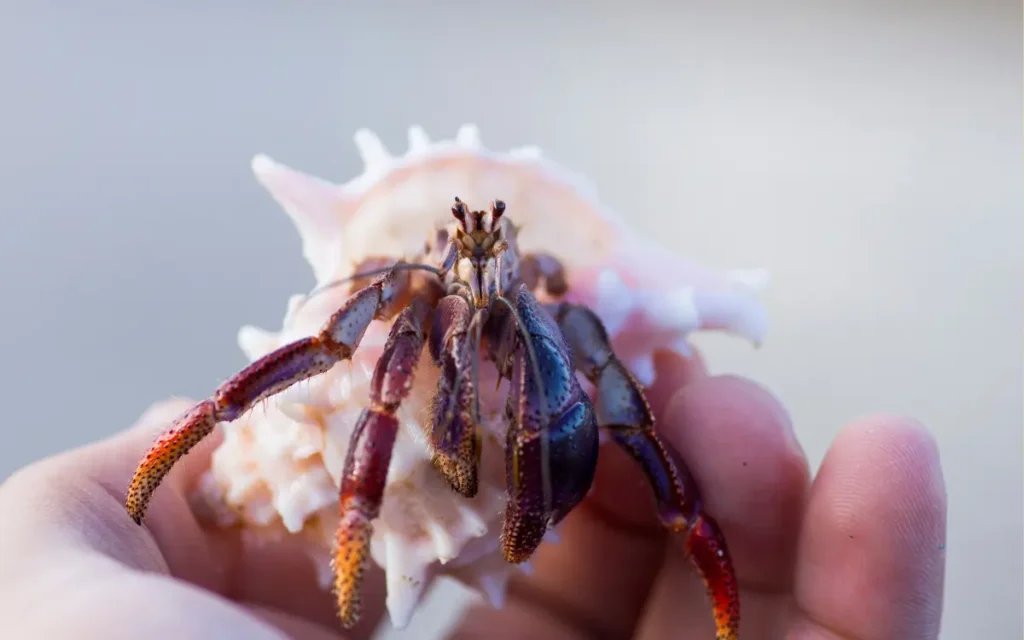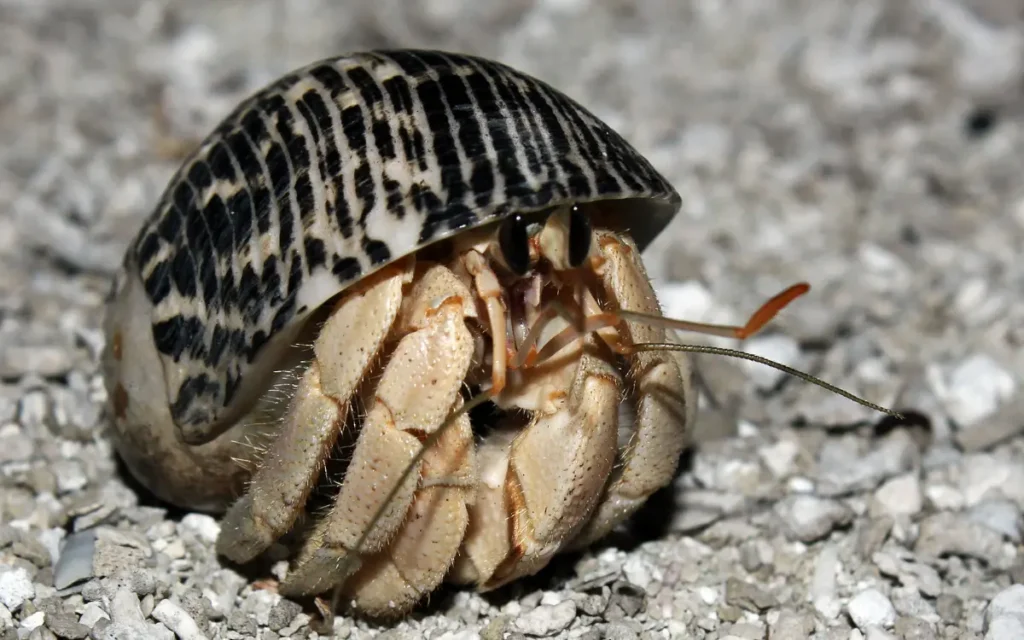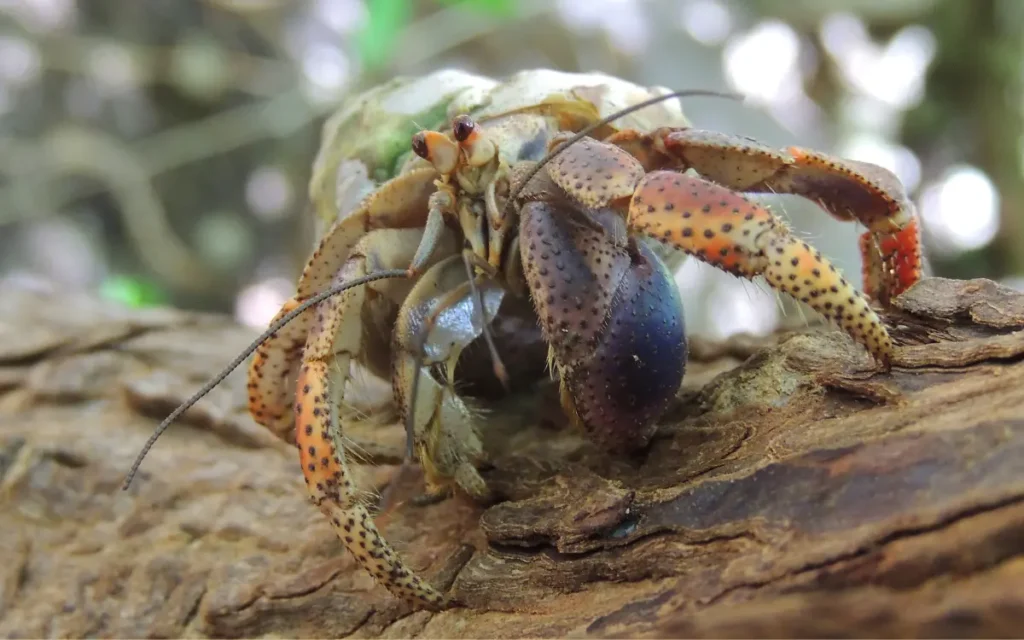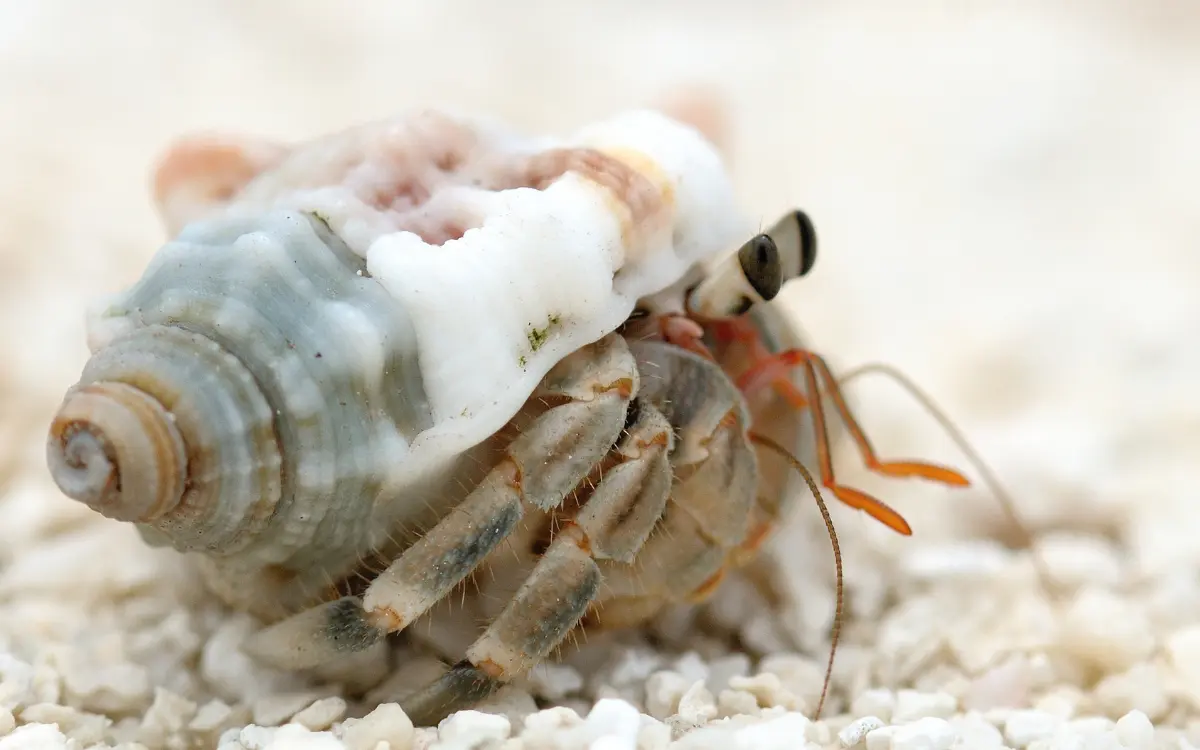Sexual dimorphism is the primary way to differentiate between male and female crabs. Male crabs have a T-shaped apron, while female crabs have a U-shaped apron on the underside of their bodies. Additionally, male crabs possess thicker and larger claws, whereas female crabs have thinner and smaller claws. These characteristics are essential for pet owners and biologists to identify the gender of their crabs.
Keep reading this guide to learn about the difference between male and female crabs. So… Here we go!
Male vs Female Crab – Quick Review Table:
Before sketching the description to help you distinguish between male and female crabs, I have organized a quick review table. Have a look at the following table for a better understanding!
Quick Review Table
| Characteristics | Male Hermit Crabs | Female Hermit Crabs | Reliability of Traits |
| Reproductive organs | Male crabs have gonopods, specialized reproductive organs. | Female crabs have broader abdominal flaps compared to males. | High (100%) |
| Abdomen flap | Shaped like an inverted ‘T’. | Bigger and rounder. | High (100%) |
| General size | Larger. | Smaller. | Low (50%) |
| Claw size and color | Larger, brighter or more vibrant. | Smaller, rougher and lighter color. | High (100%) |
| Claw dimorphism | Different-size claws, larger and bulkier. | More slender, same-sized claws. | High (80%) |
| General color | More transparent and colorful. | Less bright. | Low (50%) |
| Aggressive behavior | More aggressive. | Less aggressive. | Low (70%) |
| Taste | More robust and savory meat. | Sweeter, tender, firmer, and flakier meat. | High (100%) |
| Shedding shells | Shed 20 times. | Shed 18 times. | Low (50%) |
| Mating behavior | More active and keen, even in captivity. | Less active and interested in mating in captivity. | Low |
| Meatiness | More meaty (larger size). | Less meaty (smaller size). | High (100%) |
Interesting Fact: Do you know? The most popular way of differentiating crabs’ gender is through the color of their claws. Most of the time, masculine crabs have blue claws. On the flip side, female crabs have red claw tips.

Physical Differences
Male crabs have a T-shaped apron and two pairs of gonopods for mating, while female crabs have a U-shaped apron for egg carrying.
Reproductive Organs
Male crabs possess two pairs of gonopods (special swimmerets) for mating, while female crabs have specialized abdominal flaps for egg carrying.
Claw Size and Color
Male crabs have larger, vibrant claws for fighting and courtship, whereas female crabs have smaller, lighter claws.
General Size and Coloration
Male crabs are generally larger and more colorful, while female crabs are smaller and have subdued colors.

Behavioral Differences
Male crabs are more aggressive and actively engage in mating, while female crabs are less aggressive and produce pheromones to attract males.
After Mating in the Wild
- Female Blue Crabs: Migrate southward after mating, while male crabs stay within estuaries.
- Male Blue Crabs: Reside in the upper estuaries, digging into soft mud and seeking shelter among seagrasses.
Aggressive Behavior
- Male Crabs: More aggressive, often fighting other males.
- Female Crabs: Less aggressive but not entirely peaceful.
Life Span and Growth Rate
- Male Crabs: Generally live longer and grow faster due to frequent molting.
- Female Crabs: Shorter lifespan due to reproductive energy demands and slower growth rates.
Economic Importance
Understanding the differences between male and female crabs is crucial in the fishing industry for sustainable population management. Regulations often limit the harvest of female crabs to ensure long-term population stability.
Hermit Crabs
Hermit crabs are domestically appreciated crustaceans with over 800 species, each displaying differences between males and females. These differences include physical appearances, such as sexual organs, appendages, and leg hair, as well as behaviors and growth rates.
Interesting Fact! According to scientific studies, some male hermit crabs have larger penises than their mates. It is 60 percent longer than their entire body length. Moreover, scientists describe it as an evolutionary ploy because it helps them protect their shells. As a result, male hermit crabs can mate without leaving their shells. Plus, if they leave the shells, their rival hermit crabs can take over them.
Comparison of Male and Female Hermit Crabs

Physical Features
| Color: | White, yellow, brown, green, orange, red, blue, pink |
| Weight: | 200-500 grams (7 to 18 oz) |
| Skin: | Shell |
| Diet: | Omnivorous |
| Prey: | Fish, worms, plankton |
| Habitat: | Coastal waters |
So, if we observe the above-mentioned physical features, it’s the same for both sexes of hermit crabs. However, despite these similarities, there are some physical differences that help us to find which hermit crab is male and which one is female.
Legs
- Male Hermit Crabs: Hairy legs, elongated compared to females, and located on the right side of the abdomen.
- Female Hermit Crabs: Smooth legs, located on the right side of the abdomen.
Appendages
- Male Hermit Crabs: Do not have appendages on the left side of their abdomen.
- Female Hermit Crabs: Have three appendages on the left side of their abdomen.
Sexual Organs
- Male Hermit Crabs: Possess a penis below their fifth pair of legs.
- Female Hermit Crabs: Have gonopores, two tiny black-colored dots underneath their bodies at the top of the third pair of legs.
Behavioral Differences
- Male Hermit Crabs: Less active and prefer staying inactive.
- Female Hermit Crabs: Very active, curious, and exploratory.
Growth Rate
- Male Hermit Crabs: Higher growth rate, frequently molt.
- Female Hermit Crabs: Grow slower, breed in their early first year after maturity.
Mating Behaviors
- Male Hermit Crabs: Keen to mate, even in captivity, but cannot produce sexual pheromones.
- Female Hermit Crabs: Less interested in mating in captivity, produce sexual pheromones, and carry eggs in their appendages.
FAQs
Are Male Or Female Crabs More Expensive?
Male crabs are more expensive online and offline than female crabs. Male crabs are purchased at $75 to $75 per dozen, while female crabs are sold at 56 cents to 85 cents per dozen.
However, if you want to put them in homes, the male or female pet crabs are more expensive than wild crabs sold at stores for cooking purposes. Nevertheless, it’s important to note that the price discrepancy is relative and can vary based on cultural factors.
What physical differences differentiate a male and a female crab?
Apart from the physical differences mentioned in the first section of this guide, male crabs have hairy legs. They use these legs to grip onto their shells and fight during competition for mates.
In contrast, female crabs typically have smoother, hairless legs. These physical characteristics contribute to the distinct appearances of male and female crabs.
Do crabs have three genders?
No, crabs do not have three genders. Most species of crabs have sexual dimorphism, meaning they have distinct male and female sexes. Some species have specific characteristics (or Behaviors) that vary between individuals. Still, they fall within the typical male-female binary classification in terms of reproductive roles and anatomy.
How do chelipeds tell the difference between male and female crabs?
Chelipeds are crucial tools for crabs, consisting of the propodus, merus, and dactyl. They serve various purposes, including feeding, defending territory, and protecting the crab from predators. But do chelipeds clearly tell the gender of a crab?
You can find the gender of a crab, especially mud crabs, by examining their chelipeds. Male crabs often have larger chelipeds compared to females. So, males have larger dimensions in dactyl length, propodus length, and propodus width. ~ Source
Can Hermit Crabs Recognize Humans?
Hermit crabs do not have the neurological ability to create a bond with humans like cats and dogs. However, they can recognize their owners and respond to their presence.
Do Hermit Crabs Have Sexual Dimorphism?
Yes, they exhibit physical differences between males and females, though the degree varies among species.
Does the Number of Legs in Male and Female Hermit Crabs Vary?
No, both sexes have ten legs.
Can Hermit Crabs Change Their Sex?
No, hermit crabs cannot change their sex.
Can I Distinguish My Hermit Crabs From Their Claws?
No, claw size is not a reliable indicator of gender.
Does the Shell Type Decide the Sex of the Hermit Crab?
No, shell type does not determine the sex of the hermit crab.
Conclusion
Differentiating male and female crabs is crucial for understanding their behavior, reproductive tendencies, and ensuring proper care and breeding.
The most reliable methods for distinguishing crab genders are the presence of gonopods in males and the broader abdominal flap in females.
For hermit crabs, additional differences in legs, appendages, and behavior help identify their gender. Always use a combination of traits for the most accurate identification.

